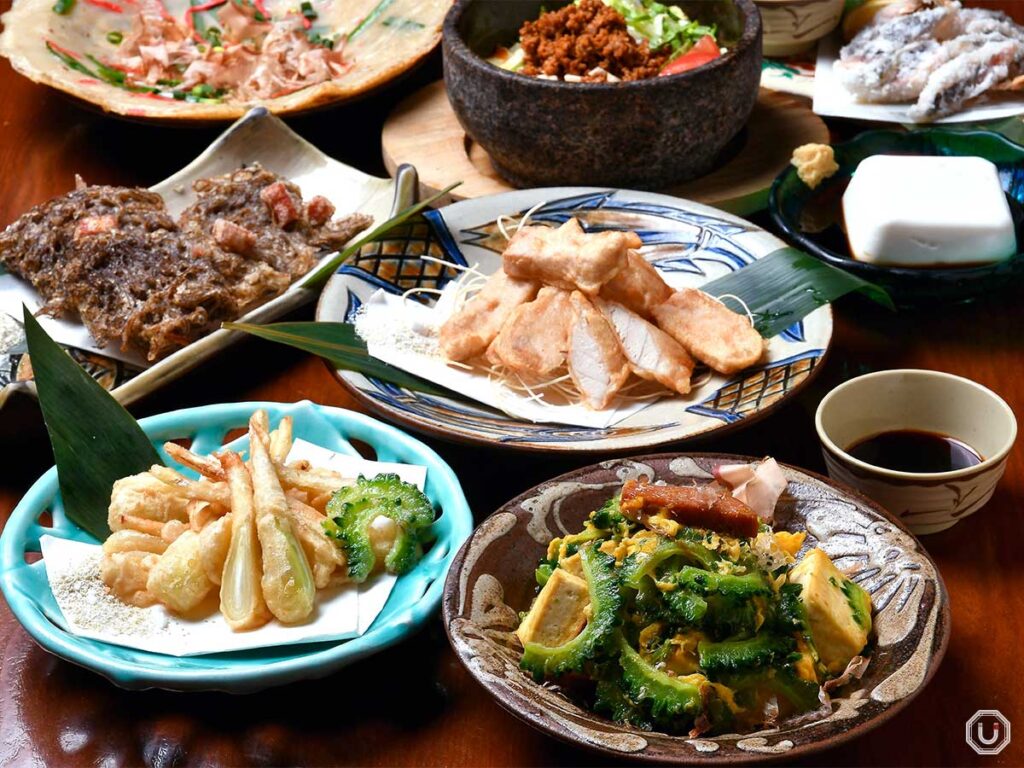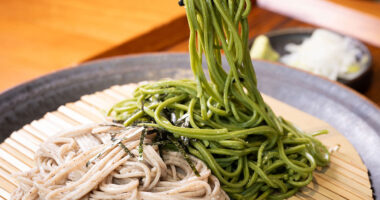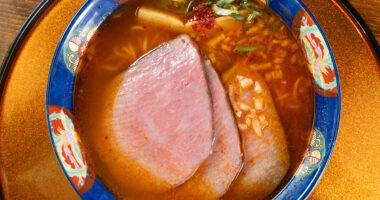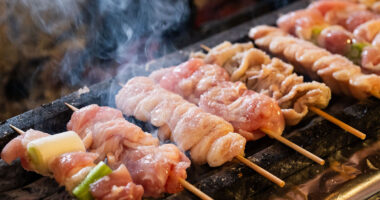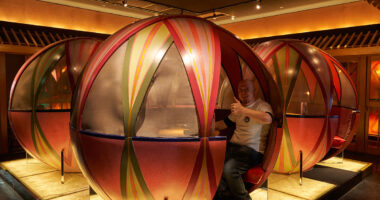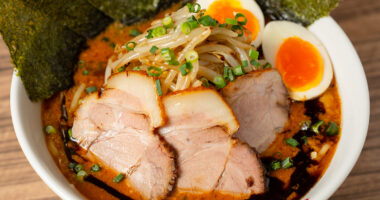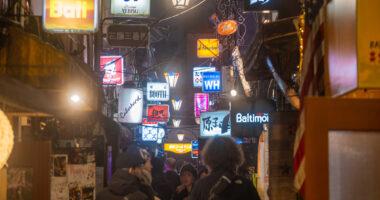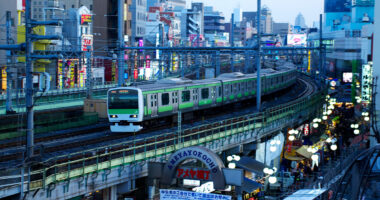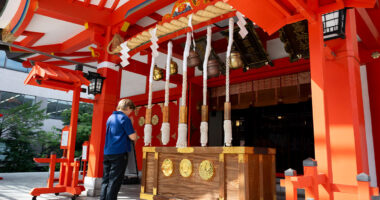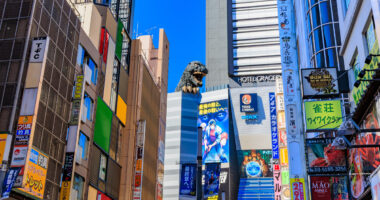Located at Japan’s southernmost point, Okinawa still preserves its unique culture today.
That uniqueness is especially evident in its cuisine, which is quite different from what you’ll typically find in Tokyo or on the mainland.
“Paikaji” is an Okinawan restaurant with six locations in Okinawa and two in Tokyo. It not only offers authentic Okinawan dishes, but also lets guests experience Okinawan culture and atmosphere.
Paikaji’s Shinjuku South Exit branch is located right near JR Shinjuku Station with excellent access, making it easy to visit between sightseeing and shopping.
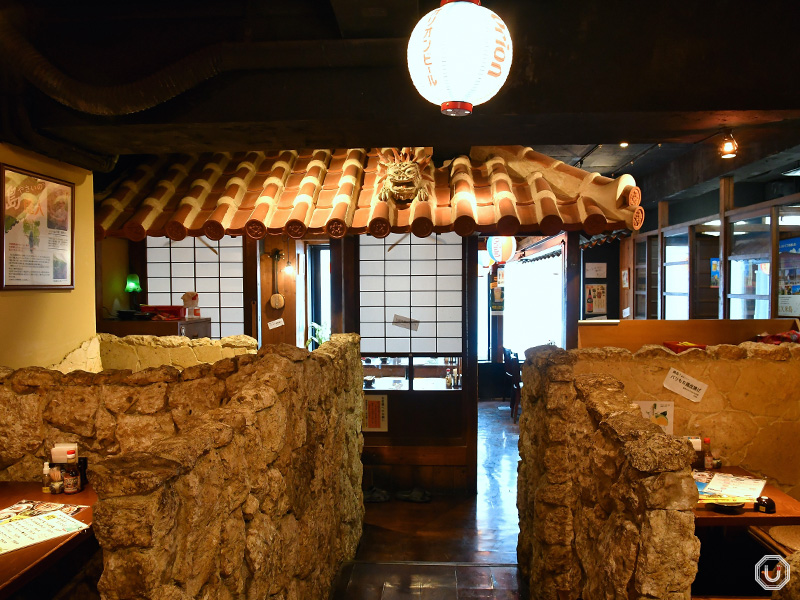
The spacious interior is designed to let you enjoy traditional Okinawan scenery, featuring stone walls, red tiles characteristic of traditional Okinawan houses, and shisa, Okinawan guardian statues that decorate rooftops.
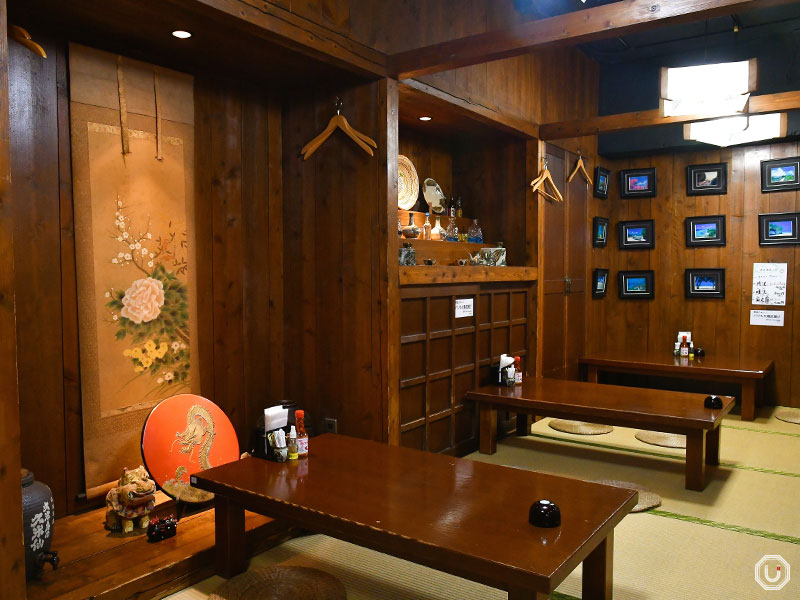
There’s also a spacious tatami area that seats around 15, designed to resemble a typical Okinawan home interior. It’s a calm, welcoming space where you might find yourself lingering longer than expected.
Enjoy a rich variety of Okinawan cuisine
At Paikaji, you can enjoy classic Okinawan dishes. Many of these are hard to find in Tokyo or on the mainland, but are staples at Okinawan specialty restaurants.

“ゴーヤーチャンプルー,” Goya Champuru 950 JPY (tax included)
“Champuru” is Okinawan dialect meaning “mixed together,” commonly used as a word referring to stir-fried dishes.
Gōyā champurū, made with gōyā (bitter melon), is a dish widely beloved in Okinawan households. It combines moderately bitter goya with pork and shima-dōfu (Okinawa’s traditional firm tofu, literally “island tofu”), stir-fried with bonito broth and other seasonings.
Paikaji’s take on the dish is impressive for its exquisite balance, with the goya properly pre-treated to prevent excessive bitterness and gentle seasoning.

“ジーマーミ豆腐,” Jimami-Dofu 600 JPY (tax included)
Jīmāmi dōfu is made by adding potato starch to peanut milk and letting it set. It’s known for its pleasantly chewy, mochi-like texture.
In the Okinawan dialect, peanuts are called “jīmāmi,” and jimami-dofu has been enjoyed for generations.
Paired with a sweet soy-based sauce, the rich flavor of peanuts spreads across your palate.
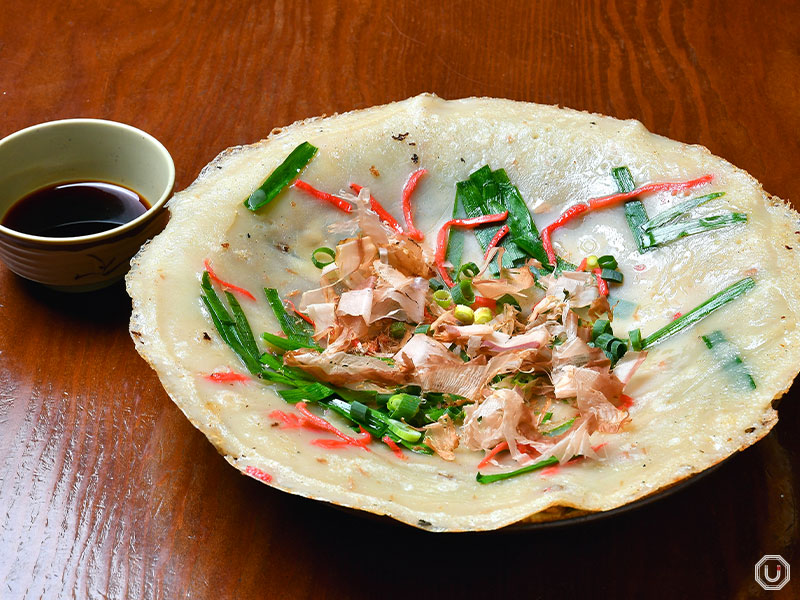
“ヒラヤーチー,” Hirayachi 600 JPY (tax included)
Often referred to as Okinawa-style okonomiyaki, hirayāchī is a flat, savory pancake made with a flour-based batter mixed with ingredients like garlic chives and pickled ginger.
A classic dish in Okinawa, it’s commonly enjoyed not just as a drinking snack but also as a light bite or afternoon treat. Try it with Worcestershire sauce.
Okinawan tempura is a one-of-a-kind delicacy
There are many dishes in Okinawan cuisine that include the word “tempura,” but they differ somewhat from the tempura commonly known in most other parts of Japan.
While tempura on the mainland is typically part of a main meal, Okinawan tempura is often eaten as a snack or light bite, not just as a meal.
It’s also typically served with sauce instead of the usual tentsuyu (tempura dipping broth) found in Japanese cuisine.
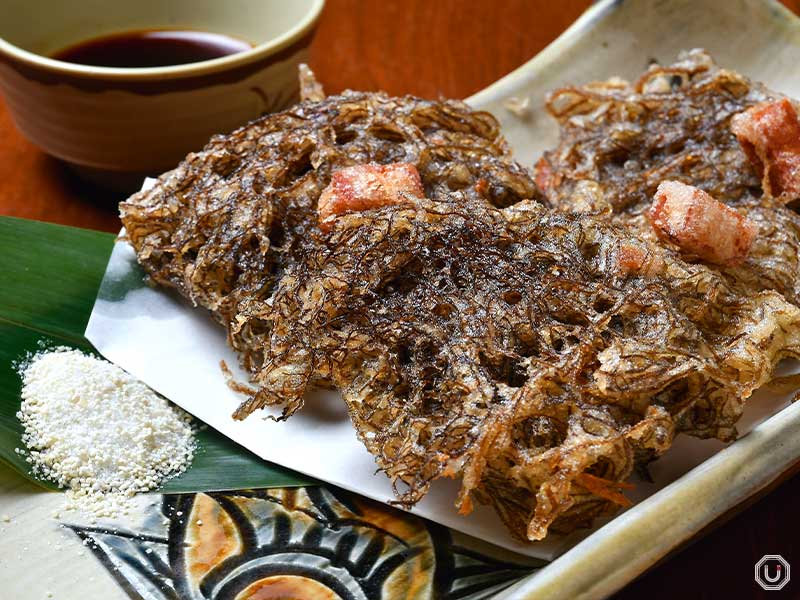
“もずくとポークの天ぷら,” Mozuku Seaweed and Pork Tempura 810 JPY (tax included)
Surrounded by the sea and made up of many islands, Okinawa has long used seaweed as a familiar ingredient. Mozuku is one of the more commonly eaten seaweeds across Japan, and Okinawa is the country’s top producer.
Unlike the thinner variety found on the mainland, Okinawan mozuku is thicker and often enjoyed as a fried dish like tempura.
Most Okinawan restaurants serve it simply as plain mozuku tempura, but at Paikaji, they add a twist by frying it together with Okinawan pork luncheon meat to create their special “Mozuku Seaweed and Pork Tempura.”
The combination of mozuku’s unique texture and the juiciness of the pork has made it a customer favorite.
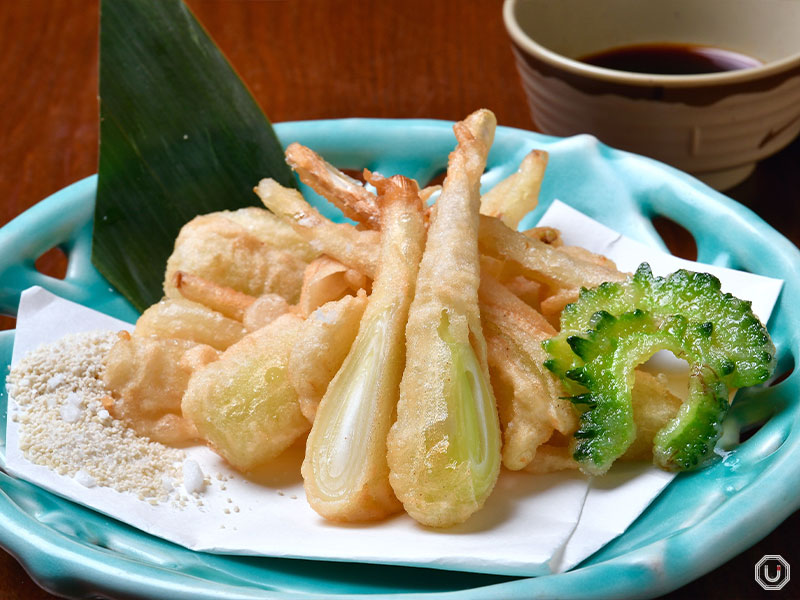
“島らっきょうの天ぷら,” Shima Rakkyo Tempura 850 JPY (tax included)
Shima Rakkyō (island shallots) is another uniquely Okinawan ingredient. Their distinctive, slightly spicy flavor makes them perfect as a drinking snack.
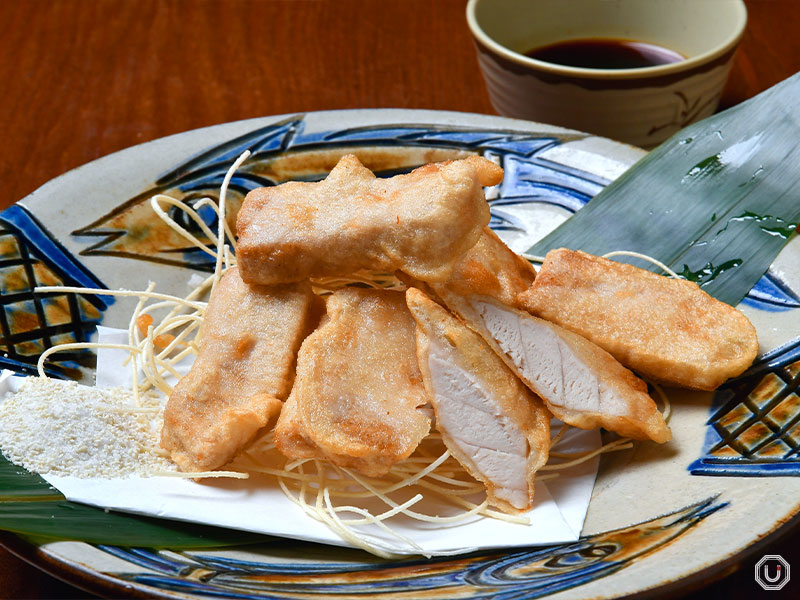
“沖縄近海マグロの天ぷら,” Okinawa Coastal Tuna Tempura 800 JPY (tax included)
Fish tempura is a staple of Okinawan home cooking. As the name suggests, the “Okinawa Coastal Tuna Tempura” uses locally caught tuna from waters near Okinawa. With a texture so hearty and satisfying, it almost resembles fried meat.
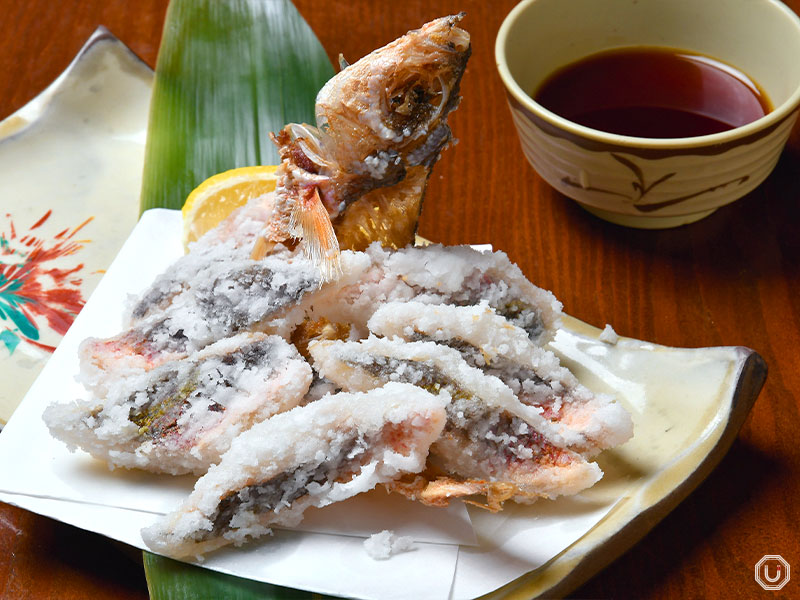
“グルクンの唐揚げ,” Gurukun Karaage 990 JPY (tax included)
Besides tempura, there are other fried fish dishes as well.
“Gurukun Karaage” features a crispy coating and tender, mild white fish that makes for a delicious dish.
Gurukun, known in English as the double-lined fusilier, is Okinawa’s official prefectural fish and is also commonly called takasago.
You can enjoy it whole—even the bones are edible.
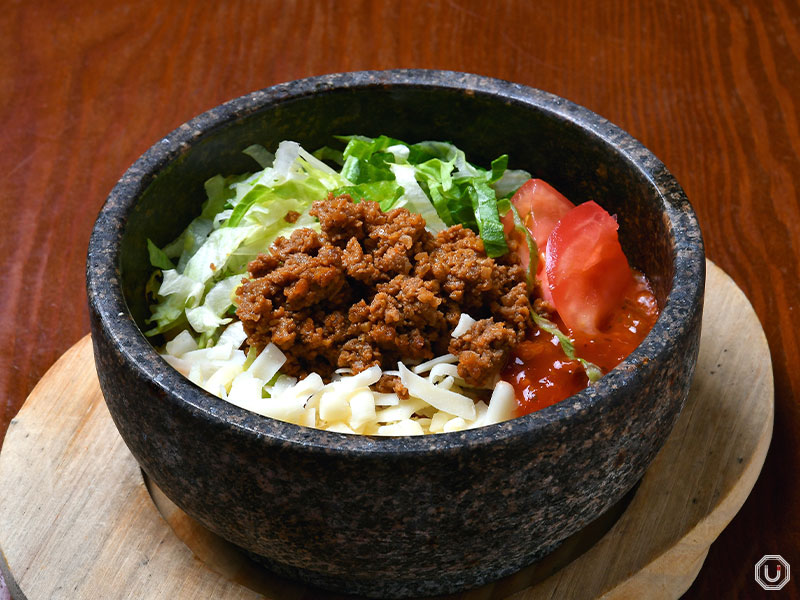
“石焼きタコライス,” Ishiyaki Taco Rice 920 JPY (tax included)
If you’re craving a rice dish to finish your meal, the “Stone-Grilled Taco Rice” is a great choice.
In Okinawa, which hosts U.S. military bases, taco rice—a dish that combines tacos familiar to Americans with Japan’s staple food, rice—is widely enjoyed.
At Paikaji, this classic Okinawan dish is reinvented as “Ishiyaki Taco Rice,” styled like stone-grilled bibimbap.

Mix the melted cheese, taco meat, vegetables, and rice together in the piping hot stone bowl before enjoying.
It’s a hearty dish, with the satisfying texture of melted cheese and crispy, slightly scorched rice.
More than food—a taste of Okinawan culture
Awamori (Okinawan distilled spirit made from rice), a type of shōchū, is the region’s iconic drink.
Known for its distinct aroma and rich depth of flavor, this spirit is often enjoyed on the rocks, with water, or aged as kūsu (aged awamori).
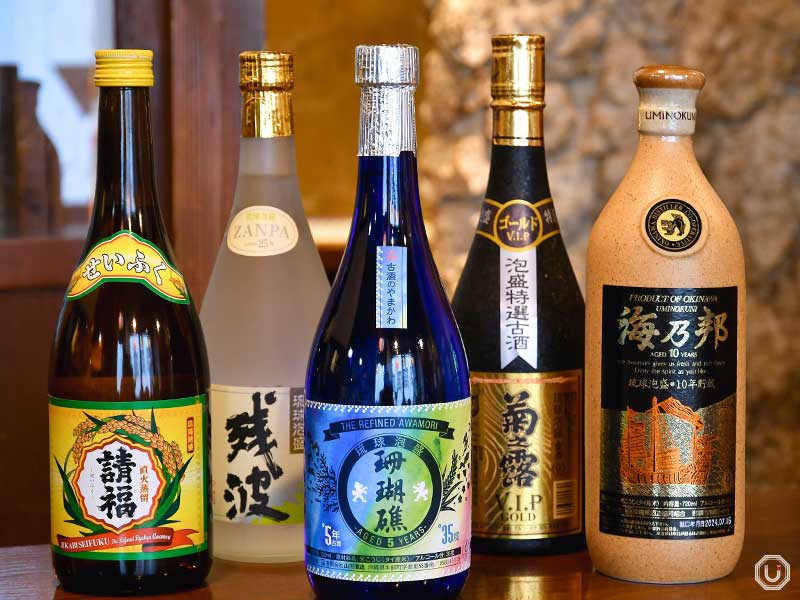
Paikaji is known for its impressive selection of awamori, offering bottles from every distillery in Okinawa Prefecture.
There are over 40 in total—and the photo shows just a small portion!
What’s more, when you order awamori at Paikaji, it’s served in a vibrant Ryūkyū glass—one of Okinawa’s traditional crafts.
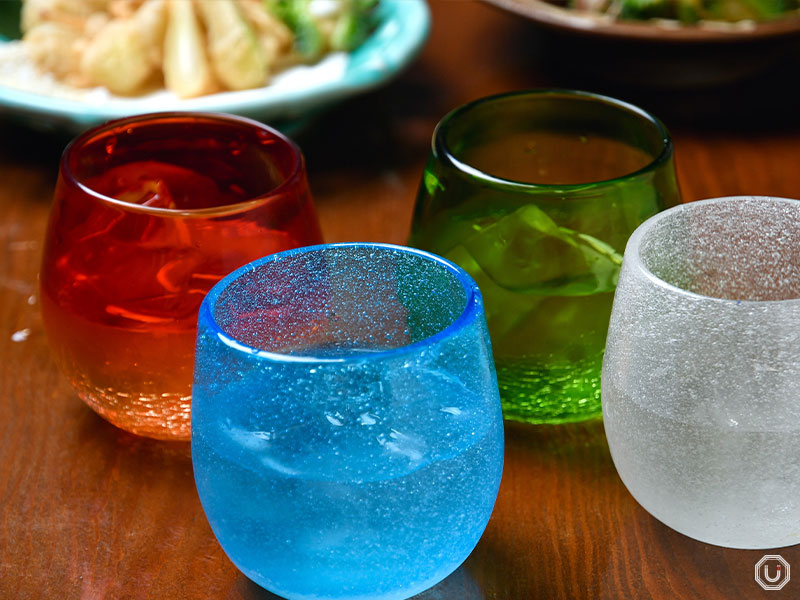
The restaurant also provides an English menu, so even first-time international visitors unfamiliar with Okinawan food can order with ease.
And on Sundays and public holidays from 7:00–10:00 PM, the restaurant comes alive with live performances of Okinawan folk music.
At Paikaji’s Shinjuku South Exit location, you can enjoy authentic Okinawan flavors at reasonable prices—all while feeling like you’ve taken a quick trip to Okinawa.
Be sure to stop by and experience it for yourself!
Information
| Store name | ぱいかじ 新宿新南口店 Paikaji Shinjuku Shin-minamiguchiten |
|---|---|
| Address | Shinjuku Youth Building 3F, 4-1-9 Shinjuku, Shinjuku-ku, Tokyo
|
| Access |
Shinjuku Station(SJK) 2-minute walk from Shinjuku Station South Exit
|
| Phone number | 03-3358-2657 |
| Reservations | Accepted |
| Payment |
|
| Service charge/Table charge | 500 JPY charge, 10% surcharge after midnight |
| Hours | Mon-Fri. 11:30-15:30(last order 15:00), 17:00-5:00 AM(last order 4:00 AM) Sat-Sun. & nat’l holidays 11:30-15:30(last order 15:00), 16:00-5:00 AM(last order 4:00 AM) |
| Closed | No fixed holidays Unscheduled holidays |
| Seating | 154 seats 110 table seats, 44 tatami room seats |
| Smoking | All seats are non-smoking |
| Official website | https://paikaji.jp/shop/shinjuku/ |
| Other information |
|
※Menu contents, prices, store information, etc. are current as of June 2025.
